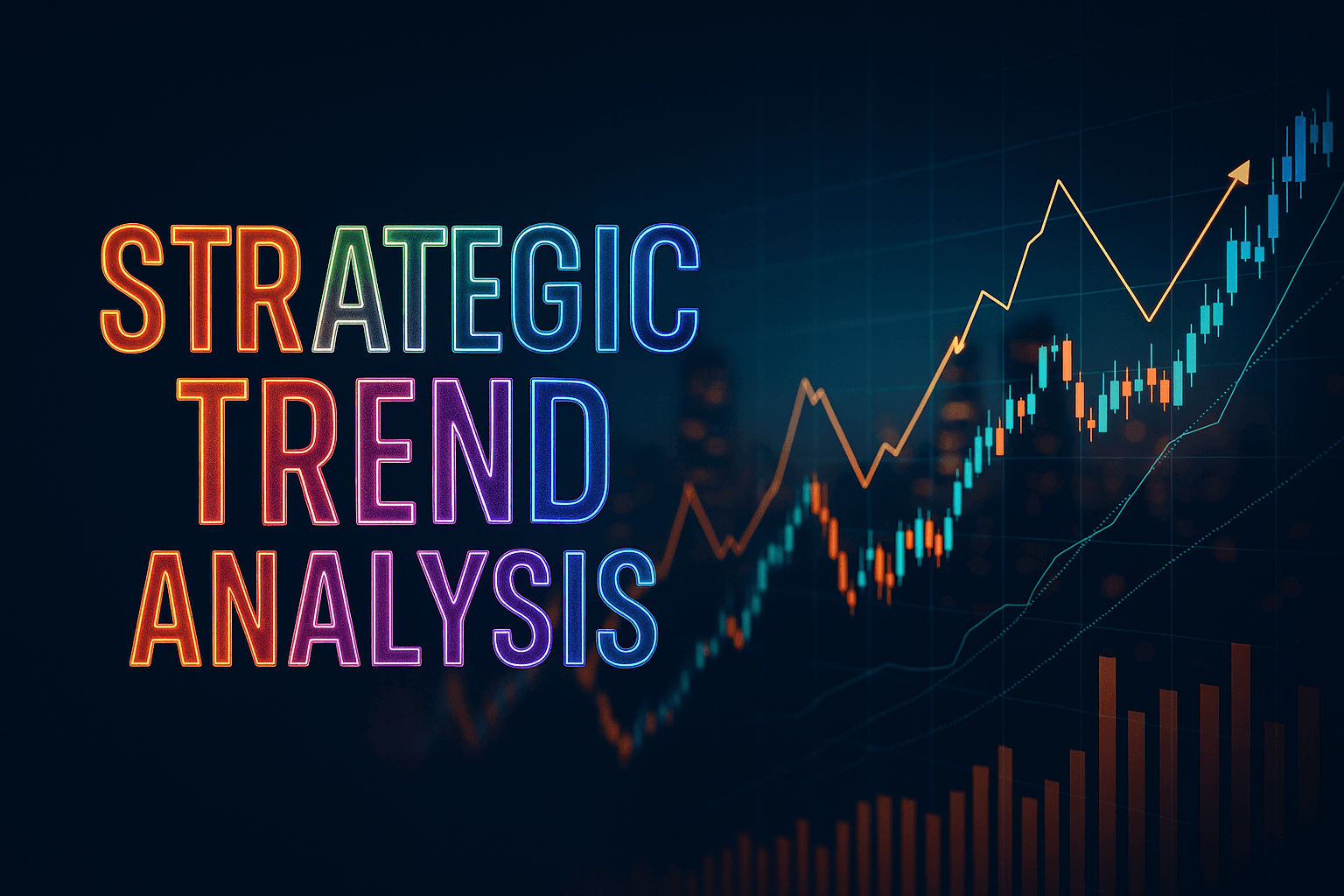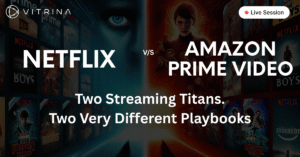Strategic Trend Analysis: Entertainment Industry Executives Need to Master

Introduction
The modern entertainment industry is characterized by two constants: unprecedented content demand and radical supply chain fragmentation. For senior executives—those responsible for content financing, acquisition, and distribution—the process of identifying and acting upon market shifts has become a decisive strategic capability.
Trend analysis in the entertainment industry is no longer a quarterly activity; it is a real-time competitive imperative. The ability to distinguish signal from noise—separating fleeting fads from durable, profitable macro-trends—is the difference between market leadership and obsolescence.
The core challenge for leadership today is that fragmented data sources and opaque global partner discovery prevent executives from accurately modeling content risk and opportunity.
This article provides a blueprint for adopting a validated, structured framework that synthesizes market megatrends with real-time, project-level competitive intelligence.
Vitrina’s role is to provide the single source of verified truth for global Film/TV projects, company profiles, and executive contacts to operationalize this trend analysis into actionable deals.
Table of content
- The Strategic Necessity of Entertainment Industry Trend Analysis
- The Four Megatrends Reshaping the M&E Supply Chain
- The Cost of Fragmentation: A Hidden Threat to Trend Analysis
- A Strategic Framework for Actionable Trend Analysis
- Vitrina: How to Turn Trend Analysis into Competitive Intelligence
- Conclusion: Mastering the Next Wave of Media Evolution
- Frequently Asked Questions
Key Takeaways
| Core Challenge | Fragmented data prevents accurate modeling of content risk and opportunity, making it impossible to align original content spend with profitable M&E business models. |
| Strategic Solution | Implement a structured framework (Track, Verify, Partner) powered by real-time competitive intelligence that links trends to actionable project data. |
| Vitrina’s Role | Vitrina provides the single source of verified project data, company profiles, and executive contacts to operationalize trend analysis into deals. |
The Strategic Necessity of Entertainment Industry Trend Analysis
For the C-suite in media and entertainment, trend analysis is not about predicting the next viral show; it’s about mitigating financial risk and optimizing the entertainment supply chain.
The stakes are enormous: billions of dollars are committed to original content, co-productions, and distribution rights, often years before release.
Without a rigorous, data-driven approach to trend analysis, these decisions are based on instinct or outdated competitive reports, leading to costly overspending and misalignment with consumer behavior.
The contemporary M&E business models demand foresight. For example, a content acquisition executive needs to know which territories are over-indexed in sci-fi co-productions right now, not six months ago. A service vendor needs to project where the next hub for virtual production is emerging.
Traditional methods—relying on anecdotal evidence, siloed internal data, or slow, expensive market reports—can no longer keep pace with the industry’s velocity. As one analyst noted, the ability to rapidly analyze and adapt content strategy based on real-time market signals has become the primary source of competitive advantage.
The Four Megatrends Reshaping the M&E Supply Chain
The most consequential shifts in the industry are not simply about what viewers are watching, but how the content is financed, produced, and delivered. These four megatrends form the core of any executive-level trend analysis, entertainment industry strategy.
GenAI as a Production and Decision Multiplier
Generative AI in media is rapidly moving from a theoretical concept to an operational tool that affects the bottom line. According to Morgan Stanley Research, major media companies could see overall programming expenses reduced by around 10%, with cost reductions reaching as high as 30% for film and TV production companies.
These savings stem from applying GenAI to pre- and post-production workflows such as automated sound mixing, fast-turnaround dubbing, and reducing the cost of script writing iterations.
For executives, the trend analysis challenge lies in predicting the GenAI adoption curve of their partners. Are co-production partners in a specific territory leveraging cost-saving AI tools, or are they still relying on traditional, higher-cost methods?
Tracking this factor affects co-financing deal terms, operational efficiency, and, crucially, time-to-market. The advantage will belong to the studio that can identify and partner with the most technologically advanced (and cost-efficient) production and localization houses globally.
The Re-Bundling Era and Monetization Model Shift
The high-growth phase of the SVOD wars is over, replaced by an era defined by fiscal scrutiny and the fight against streaming churn. The market is actively shifting from single-service SVOD to a bundle economy.
Executives are embracing indirect acquisition models, with 82% of brands planning to boost investment in channels like bundling and partner platforms, according to a Bango study.
This trend is driven by two key factors: unsustainable customer acquisition costs (CAC) for single-service apps and consumer desire for a single, consolidated bill.
The strategic implication for trend analysis is the need to track who is bundling with whom and how content windows are being collapsed or re-prioritized. Content valuation is now tied not only to subscriber growth but to its utility in a bundled offering—whether it’s used to reduce churn, drive users to an AVOD tier, or serve as a foundational anchor in a new wholesale distribution arrangement.
Global Content Flow and Localized Production Hubs
The demand for local content that can travel globally remains insatiable, forcing the industry to invest heavily in cross-border production. However, this trend presents a massive strategic challenge: how to find reliable, verified co-production partners in emerging markets.
The difficulty lies in vetting partners for their true track record, financial stability, and ethical compliance—especially when dealing with smaller, independent studios abroad.
The operational pain points include opaque data on a potential partner’s co-production history, lack of verifiable information on a company’s compliance record, and inefficient discovery, which often relies on slow, expensive trade shows.
An effective trend analysis system must therefore include real-time project tracking that can illuminate production activity by region, genre, and partner company, moving beyond anecdotal sourcing. For deeper insights into managing global production, executives can review strategic advice on >optimizing their production strategies.
The Rise of Fandom Economics and IP Lifecycle Management
The final key trend involves maximizing the value of intellectual property (IP) across the entire consumption ecosystem. Successful IPs, from major studio franchises to breakout streaming hits, are managed as interconnected universes spanning film, TV, gaming, and licensed merchandise.
The competition isn’t just between streamers; it’s for consumer attention against User-Generated Content (UGC) platforms. Executives are now conducting trend analysis to answer: Where does a successful TV series transition into a gaming title? Which production companies specialize in cross-platform IP conversion?
This requires tracking a company’s full portfolio across media types—not just its completed projects, but its projects currently in development or pre-production. The early visibility into development pipelines is the only way to strategically position a company for co-financing, licensing, or content service opportunities before the project becomes public knowledge.
The Cost of Fragmentation: A Hidden Threat to Trend Analysis
The four megatrends above demonstrate that M&E is a complex, multi-variable domain. The hidden cost executives face is the fragmentation of intelligence.
Competitive intelligence comes from multiple, disconnected sources: expensive market reports, proprietary internal spreadsheets, trade show lists, and news articles. Synthesizing this data manually is time-consuming and prone to error.
Moreover, finding a co-production partner in the APAC region requires weeks of vetting, phone calls, and legal due diligence because there is no single source for verified contact and credit information.
This inefficiency directly impacts production timelines and raises project costs. Executives are constantly struggling with the pain points in cross-border transactions due to reputation and credentials gaps.
Finally, by the time a project’s status appears in a traditional industry database, it is often too late for an acquisition or co-financing deal. Trend analysis, entertainment industry success demands that intelligence be real-time, reflecting projects still in the development or financing stage.
When you cannot easily connect a trend (e.g., GenAI adoption for localization) to the actionable data (e.g., a specific, verified localization studio that specializes in GenAI tools), your trend analysis remains theoretical, not operational.
Vitrina: How to Turn Trend Analysis into Competitive Intelligence
The challenge for M&E executives is finding a platform that unifies market trends with operational execution. Vitrina is purpose-built to bridge the gap between high-level trend analysis and granular, project-level competitive intelligence.
Vitrina operates as the single source of verified truth for the global entertainment supply chain:
Real-Time Project Tracker: Vitrina tracks over 300,000 global film and TV projects across their entire lifecycle, from pitch and development through financing and production. This gives executives the early warning system necessary to track content production costs and emerging genres before they hit the headlines.
Verified Company Profiling: The platform profiles hundreds of thousands of companies—studios, distributors, co-producers, and service vendors—with verified data on their specialization, track record, and past collaborators. This eliminates the need for manual, high-risk partner vetting.
3 Million+ Executive Contacts: Vitrina provides verified contact details and job titles for decision-makers (CXOs, Head of Acquisition, etc.), allowing executives to instantly operationalize their trend analysis by reaching the right person at the right time.
By providing structure to fragmentation, Vitrina transforms theoretical trend analysis into a direct, competitive advantage, enabling faster, smarter, and less-risky content decisions.
Conclusion: Mastering the Next Wave of Media Evolution
The forces reshaping the M&E sector—Generative AI in media, the bundle economy, and globalized co-production—have made strategic trend analysis, entertainment industry a mission-critical function. Executives can no longer afford to react to market shifts; they must anticipate and act upon them with precision.
Mastery of the modern M&E landscape requires a structured framework powered by real-time, verified competitive intelligence. By implementing a system that allows you to Track project movement, Verify partner credibility, and Partner efficiently, your organization can move from simply weathering the industry’s volatility to actively shaping its future.
Frequently Asked Questions
GenAI’s primary impact on content financing is through cost reduction, with estimates suggesting up to 30% savings in production costs through automation of tasks like dubbing, editing, and script iteration. This shifts co-production economics by altering the baseline budget, making tech-forward partners more attractive and potentially lowering the overall financial risk profile of a project.
The main strategic challenge is the lack of verifiable, centralized data on a potential partner’s true track record, financial standing, and executive leadership, particularly in fragmented international markets. This data opacity forces executives to rely on inefficient, high-risk manual vetting, which slows deal velocity and increases the potential for costly disputes down the line.
Content distribution is shifting toward “re-bundling” and AVOD/FAST models due to high customer acquisition costs and streaming churn in the saturated SVOD market. Many major players are prioritizing wholesale distribution partnerships (e.g., with telcos) and leverage ad-supported tiers to reduce churn and acquire customers more efficiently, making content’s value less about pure exclusivity and more about retention.
The most critical data points for executive-level competitive intelligence are not consumer-facing metrics (like viewer ratings or social sentiment), but entity-level, supply-chain data. This includes real-time project status (development, pre-production), verified company-to-company collaboration history (who worked with whom), and up-to-date, accurate executive contact information for decision-makers.















































